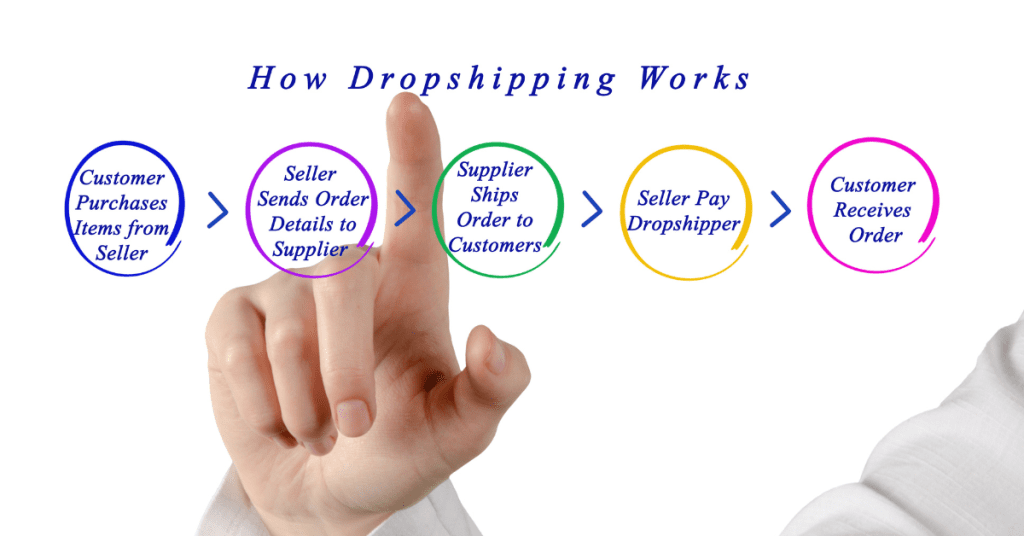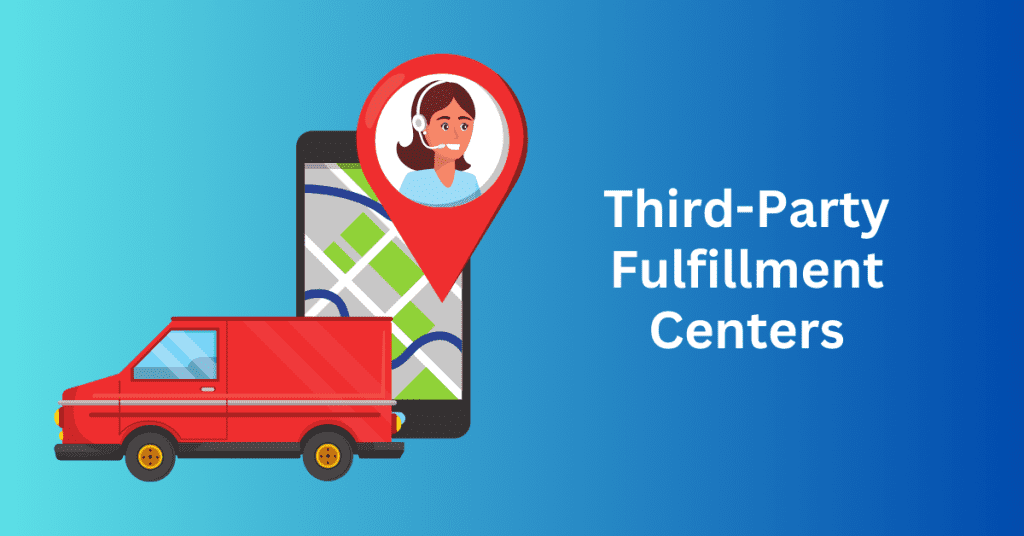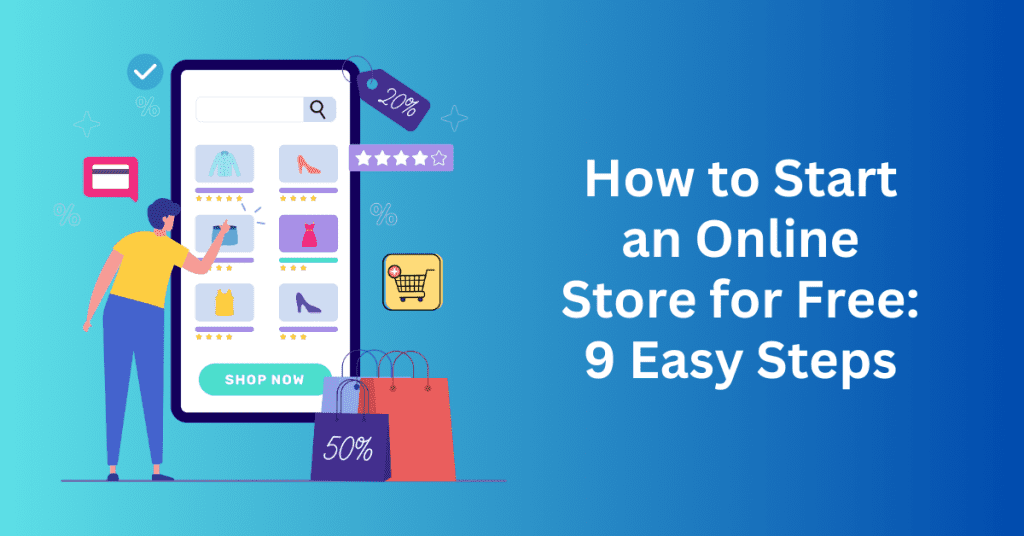If the routine of your 9-to-5 job has become monotonous, and you are looking for an alternative income, the prospect to start an online store could be the transformative answer you seek. The year 2024 is poised to witness worldwide retail eCommerce sales projected to reach a staggering $6.9 trillion, underscoring the immense potential within the industry.
Remarkably, the landscape of online entrepreneurship now allows you to embark on your own business venture without the need for an initial investment, physical inventory, or extensive entrepreneurial expertise. Diverse business models exist to facilitate a no-cost entry into the online marketplace.
In this guide, we outline the steps to start your online store with zero financial investment. We cover everything necessary for your success – from selecting a suitable business model and niche to procuring, designing, and effectively marketing your products. This guide is designed to empower aspiring entrepreneurs to kickstart their online business journey with confidence and practical insights.
Business Models to Start an Online Store With No Money
When you start an online store, finding the right business model is vital, especially if you don’t have the startup capital to invest. Thankfully, the eCommerce industry provides various options, which we explore below.
While each is a bit different, every one of them is worth considering and can help you make money online.
Print on Demand

In essence, this approach presents a user-friendly method for order fulfilment. Besides, it caters to beginners aiming to design, create, and market personalized apparel, accessories, and even pet products. In addition, the beauty of this model lies in its alleviation of concerns related to inventory management, storage constraints, and logistical challenges.
A brief overview of how Print on Demand works:
- You sign up for an account with a POD supplier.
- Choose a product you want to sell.
- Create and Apply a design to the product.
- Select a sales channel – an eCommerce platform or marketplace.
- Add products to your online store and start selling.
Following a successful sale, the print-on-demand supplier seamlessly manages all aspects. This will also include sourcing, printing, packaging, and direct shipping to customers.
The attractiveness of the Print on Demand model lies in its minimal upfront costs for starting a business. Costs are incurred only if you opt to sell on eCommerce platforms or marketplaces, which may entail various fees or premium features. Alternatively, investment in paid marketing can be a factor.
Besides, noteworthy industry data underscores the promising trajectory of this market, with experts predicting substantial growth, estimating the global print-on-demand market size to reach $38.21 billion by the year 2030.
Dropshipping

While sharing similarities with Print on Demand, dropshipping presents a slightly different approach as it lacks the customisation feature for the products offered. Nevertheless, it adheres to comparable principles, enabling the sale of a diverse range of products without the need for inventory management or logistical concerns.
Typically, dropshipping involves:
- Negotiation with Supplier: Firstly, you need to establish agreements with a supplier regarding prices, rates, and product listings in your store.
- Customer Purchase: A customer purchases from your store.
- Information Forwarding: You or an automated system transmits the customer’s order information to the supplier.
- Product Sourcing and Fulfillment: Finally, the dropshipping supplier sources or produces, packages, and dispatches the product directly to the buyer.
With this model, you will pay the wholesale price to the supplier, and customers pay the retail price set by you. In short, you act as a middleman, selling the supplier’s products and earning a commission for yourself.
In terms of industry data, projections indicate significant growth in the global dropshipping market, with an estimated size of $476.1 billion anticipated by the year 2026.
Third-Party Fulfillment Centers

If you possess products for sale but wish to sidestep the complexities of logistics and the expenses associated with warehousing, consider forming a partnership with a third-party fulfilment centre. Notable companies such as ShipHero or Red Stag Fulfillment specialize in connecting with eCommerce websites, managing warehousing, packaging, and shipping processes.
While the specifics may vary based on the chosen company and your specific service requirements, the general process typically unfolds as follows:
- Initiate Contact: Reach out to the fulfilment centre, negotiate rates (some may offer a pay-as-you-go model), and dispatch your inventory to their facility.
- Order Placement: Once a customer places an order on your eCommerce website, the order is transmitted to the fulfillment center, either manually or through an automated process.
- Warehouse Operations: The team at the warehouse picks and packs the product, including the order receipt and relevant details.
- Shipping Process: The shipping carrier retrieves the order from the fulfilment centre and delivers it to your customer.
Regardless of the chosen business model from the three discussed, it is crucial to thoroughly vet potential fulfilment partners to avoid complications. This involves engaging with their representatives, scrutinizing their websites, and perusing third-party reviews.
How to Start an Online Store for Free: 9 Easy Steps

With a bit of patience, anyone can enter the world of eCommerce, start their own business, and make money online. Here’s a thorough guide.
1. Select a Niche – Start an Online Store
A niche denotes a specialized market segment tailored to a specific product. Opting for the right niche can attract customers, reduce competition, and boost profits.
However, striking a balance is crucial. If a niche market is excessively broad, then it may fail to resonate with the target audience. Conversely, if it’s overly narrow, attracting customers might prove challenging. Hence, small businesses should aim for a healthy middle ground.
Discovering a trending niche is feasible through swift market research. Here’s how:
- Identify Trends: Leverage social media platforms like Facebook, Instagram, and others to gain valuable insights into customer preferences. You can monitor trends on these social media channels to reveal emerging market interests.
- Utilize Market Research Tools: Employ tools such as Semrush or BuzzSumo to gauge the popularity of your ideas. These tools help assess whether your envisioned niche has enough traction to build a viable business around it.
By navigating between the extremes of broad and narrow, and employing effective market research strategies, you can then pinpoint a niche that aligns with consumer demands, fostering success and growth.
2. Identify Profitable Products – Start an Online Store
When embarking on the journey of launching an online business, curating a collection of products that resonate with potential customers becomes a pivotal task. Here’s a guide on how to discover the most sought-after items for your business:
- Leverage Product Research Tools: Specialized tools such as Sell The Trend and Niche Scraper prove invaluable in identifying products with high demand. These tools offer insights into trending items, facilitating informed decisions for your product selection.
- Conduct Competitive Analysis: Delve into thorough research on other businesses within your niche. Inspect their product collections and customer reviews. By analyzing this information, you can identify opportunities to offer products that are not only similar but also possess enhancements that outshine competitors.
- Utilize Marketplace Search Bars: Take advantage of the search bars on popular marketplaces like Etsy or Amazon. By inputting a few letters related to your niche, the search bar provides suggestions and a dropdown list of relevant products. This offers a quick and direct way to gauge what potential customers are actively seeking.
By incorporating these strategies into your product discovery process, you can enhance the likelihood of assembling a collection that aligns with market demands and captivates the interest of your target audience.
3. Find a Reliable Supplier – Start an Online Store
It is crucial to recognize that you find a reliable supplier. You need to research and study carefully to get a good one. Because they are going to handle and ship your product out. If they are not providing a quality product or service, your customer experience will be bad.
Here are key aspects to focus on during this evaluation:
- Supplier’s Reputation: Investigate the supplier’s reputation by seeking out existing merchant reviews. Assess whether they consistently receive positive ratings, indicating a history of reliable service.
- Location: Whenever feasible, opt for a local business as your supplier. This choice ensures expedited delivery and potentially reduces shipping costs, contributing to a more efficient fulfilment process.
- Quality and Selection: A reputable supplier should offer high-quality wholesale products at reasonable costs. To validate this, consider ordering samples to personally assess whether their products meet your standards.
- Turnaround Time: Inquire about the supplier’s turnaround time, and if possible, conduct tests to verify their ability to meet your specific requirements promptly. Reliability in meeting deadlines is critical for a smooth and responsive business operation.
- Verification of Legitimacy: Never trust a supplier without confirming their legitimacy and reliability. Establish direct communication with them, read verified reviews from other businesses, and thoroughly analyze search results to ensure their credibility.
By considering these factors, you can then enhance the likelihood of establishing a successful and dependable partnership with a dropshipping supplier that aligns with your business goals and standards.
If you are doing print-on-demand, big suppliers like Printify and Printful can provide reliable high-quality products. While Printful is handling everything in-house, Printify provides choices to access different verified partners so you can compare and choose between different suppliers.
4. Create Product Designs – Start an Online Store
If your business focuses exclusively on dropshipping, you can skip this step. There is no control over the product design for you, you will get whatever products are offered by the supplier.
However, if you choose the print-on-demand business model, here’s how you can craft your product designs:
- Seek Inspiration: Begin by exploring creative platforms such as Pinterest, and Etsy. This process helps you gain inspiration and insight into current design trends.
- Utilize Design Tools: Employ tools like the Printify Mockup Generator, Canva, and Photoshop to bring your designs to life. These platforms offer user-friendly interfaces for designing graphics.
- Leverage Mockup Generators: With the aid of beginner-friendly tools like the Mockup Generator at Printify, you don’t need to be a professional designer. Easily upload graphics, images, logos, or craft original designs from scratch using features like the AI Image Generator, Text Editor, and a free Graphics Library.
By following these steps, you can navigate the process of creating original product designs for your print-on-demand business, even if you’re not an experienced designer.
5. Establish a Brand – Start an Online Store
Establishing a strong brand is a key factor in setting a business apart from its competitors. In addition, building a brand that resonates with your target audience makes it easier to capture their attention and cultivate an emotional connection. Here’s a guide to creating a compelling brand:
Choose a Business Name:
- Start by selecting a business name that embodies simplicity, originality, and memorability. A great name is a fundamental building block for your brand.
Brand Story:
- Vision: Clearly articulate the mission of your business. Share your story and motivations for launching an online boutique. Convey why customers should trust your brand.
- Values: Define the core values your business stands for. Whether it’s animal rights, environmental protection, or other principles, aligning with your customers’ values makes it easier to earn their trust.
- Voice: Tailor your tone of voice to resonate with your target audience. Consistency across all communication channels helps reinforce your brand identity.
Visual Elements:
- Design Assets: Develop visual elements such as a logo, illustrations, and icons. Ensure a consistent colour scheme that reflects your brand’s personality.
- Tools for Beginners: Explore user-friendly tools like Pixlr or Adobe Express to initiate the design process.
6. Choose Where to Sell – Start an Online Store
Selling online has become an integral part of modern business, and there are various platforms to choose from, each with its own set of advantages and disadvantages. Two primary options for online selling are establishing an e-commerce store or leveraging online marketplaces. Let’s compare these two approaches:
E-Commerce Store:
| Pros | Cons |
| Branding and Customization: With your own e-commerce store, you have complete control over the branding, design, and user experience. This allows you to create a unique and consistent brand image. | Higher Initial Costs: Setting up and maintaining an e-commerce store may involve higher initial costs for website development, hosting, and ongoing maintenance. |
| Flexibility: You have the flexibility to set your own policies, control pricing, and manage inventory according to your preferences. You can also customize the website features to cater to your specific needs. | Marketing and Traffic: Generating traffic to your website requires significant effort and investment in marketing. Building brand awareness and driving traffic may take time. |
| Customer Relationships: Direct interaction with customers enables you to build stronger relationships. You can collect customer data, implement loyalty programs, and provide personalized experiences. | Technical Expertise: Managing an e-commerce store may require technical expertise or the assistance of professionals, particularly for troubleshooting and updates. |
| Long-Term Growth: Over time, an e-commerce store can help establish your brand as an authority in your niche, contributing to long-term growth and customer trust. |
A few examples:
- Shopify
- Squarespace
- Wix
- WooCommerce
- BigCommerce
Online Marketplaces:
| Pros | Cons |
| Built-In Traffic: Marketplaces like Amazon, eBay, and Etsy already attract millions of visitors daily. Leveraging these platforms provides instant access to a large customer base. | Fees and Commissions: Marketplaces charge fees and commissions on each sale, which can eat into profit margins. These fees can vary and may include listing fees, transaction fees, and subscription fees. |
| Lower Initial Investment: Compared to an e-commerce store, the initial investment to start selling on a marketplace is often lower. This is beneficial for small businesses or individuals with limited resources. | Limited Branding: While you can customize your storefront to some extent on a marketplace, it won’t be as extensive as having your own e-commerce store. Your brand may be overshadowed by the marketplace’s branding. |
| Simplified Setup: Marketplaces usually offer a simplified setup process, allowing sellers to start listing products quickly without the need for extensive technical knowledge. | Policy Restrictions: Marketplaces often have strict policies regarding product listings, shipping, and customer interactions, limiting your control over certain aspects of your business. |
| Trust and Credibility: Being associated with well-known marketplaces can instill trust and credibility among customers who are familiar with these platforms. |
A few examples:
- Etsy
- eBay
- Walmart
Choosing between an e-commerce store and an online marketplace depends on your specific business goals, resources, and preferences. An e-commerce store offers more control over branding and customer relationships but requires a higher initial investment.
On the other hand, online marketplaces provide a ready-made platform with a built-in audience, but you may sacrifice some control and incur additional fees. Some businesses even choose to use both approaches simultaneously, combining the benefits of both strategies. Ultimately, the best choice depends on your unique business model and long-term objectives.
7. Make and List Your Products – Start an Online Store
Once you’ve chosen an eCommerce solution, listing products on your store will vary depending on the platform and supplier. Here’s an example of using Printify’s print-on-demand service to create your products:
- Sign Up for a Free Account: Begin by creating a free account on Printify.
- Connect Your Store: Follow the instructions provided in Printify to seamlessly connect your store.
- Select a Product: Browse through the Printify Catalog and choose the product you want to feature in your store.
- Design with Mockup Generator: Utilize Printify’s Mockup Generator to design your chosen product.
- Save Your Product: Once your design is ready, click “Save product”. You need to complete your product information as below:
- Select a title image and mockup views for display in your store.
- Choose a title image colour, if applicable, as some products may have only one variant.
- Edit the title.
- Write a compelling product description.
- Set or use a suggested price and profit margin.
- Publish Your Product: When all elements are ready, click “Publish” to add the product to your store.
- After Sale: Once a sale is made, the responsibility shifts to Printify. It will handle all aspects of the fulfilment process, including printing, packaging, and shipping.
By following this systematic approach, you can efficiently list and manage products on your eCommerce store using the Printify print-on-demand service.
8. Work on Search Engine Optimization
Enhancing your store’s visibility and ranking in search engines through Search Engine Optimization (SEO) is crucial for attracting more traffic. In addition, SEO is important for your business’s long-term organic growth.
Here’s a guide on optimizing your store for SEO:
Keyword Optimization: Integrate relevant keywords strategically in product titles, descriptions, and various sections of your store. You need to also utilize research tools like Semrush or Ahrefs to identify impactful keywords that align with your products.
Optimized Product Photos: Ensure your product photos are not only visually appealing but also optimized for SEO. You can include keywords in their meta descriptions to improve their discoverability through search engines.
Mobile-Friendly Website: Develop a mobile-friendly website that not only adapts to various devices but also loads quickly. Google prioritizes mobile-friendly websites in its rankings. Additionally, ensure a user-friendly interface for a seamless browsing experience.
Educational Resources: Explore reputable SEO courses to deepen your understanding of best practices. You can consider enrolling in an SEO Masterclass for Driving Sales to gain insights into advanced strategies and techniques.
By incorporating these SEO optimization practices, you can significantly enhance your store’s online visibility, attract more organic traffic, and ultimately drive sales. Stay informed about the latest SEO trends and techniques to adapt and refine your strategy over time.
9. Promote Your Online Store
Developing a comprehensive marketing strategy is indispensable for the success of new businesses. You need to also experiment with various marketing channels to broaden your customer base and boost sales. Here are some effective avenues to explore:
Social Media: Firstly, you can leverage social media as a free advertising platform. You can then establish a presence on various platforms, posting captivating product photos, organizing giveaways, and running contests to drive traffic to your store. Then, engaging with your audience on platforms like Facebook, Instagram, and others can significantly enhance brand visibility.
Content Marketing: Initiate a content marketing strategy without substantial upfront costs. You need to publish relevant content consistently to build trust with your customers. Additionally, consider starting a YouTube channel to engage with your target audience and showcase your products through videos.
Email Marketing: Harness the power of email marketing, a popular and cost-effective way to advertise. You can utilize tools like Mailchimp or GetResponse to automate email marketing. This will then allow you to stay connected with your audience and nurture customer relationships.
Paid Advertising: Invest in paid advertising through platforms like Facebook, Instagram, TikTok, or Google Ads. These channels offer targeted advertising options, hence, allowing you to reach specific demographics and maximize the impact of your promotional efforts.
By incorporating these diverse marketing channels, you can then create a well-rounded strategy that effectively promotes your business, engages with your audience, and ultimately drives sales. Be adaptable and analyze the performance of each channel to refine your approach over time.
Final Thoughts: How to Start an Online Store for Free
In conclusion, venturing into the world of e-commerce has never been more accessible and exciting than with print-on-demand. Besides, starting your own online store for free using this innovative model opens up huge possibilities. This also allows you to turn your creative ideas into tangible products without the hassle of inventory management or upfront costs.
As we’ve explored, the first step is choosing a reliable print-on-demand platform that aligns with your vision and business goals. Whether you’re an artist, designer, or entrepreneur, these platforms empower you to showcase your unique creations to a global audience. The freedom to design and customize your products ensures that your store reflects your personal style and brand identity.
Furthermore, the cost-free nature of this approach removes the financial barriers that might deter aspiring entrepreneurs. With no upfront expenses or inventory to manage, you can then focus on what truly matters – cultivating your brand, connecting with your audience, and refining your products to meet market demands.
The seamless integration of print-on-demand with e-commerce platforms simplifies the entire process, from creating product listings to handling transactions and shipping. This user-friendly approach allows you to concentrate on growing your business rather than getting bogged down by technical complexities.
So, why wait? Take action and start your business today.





